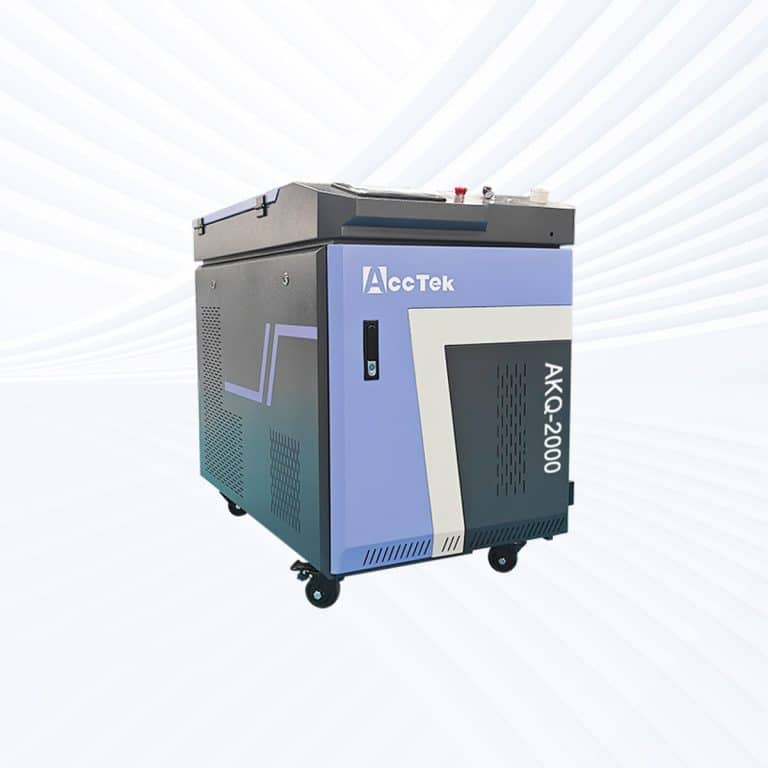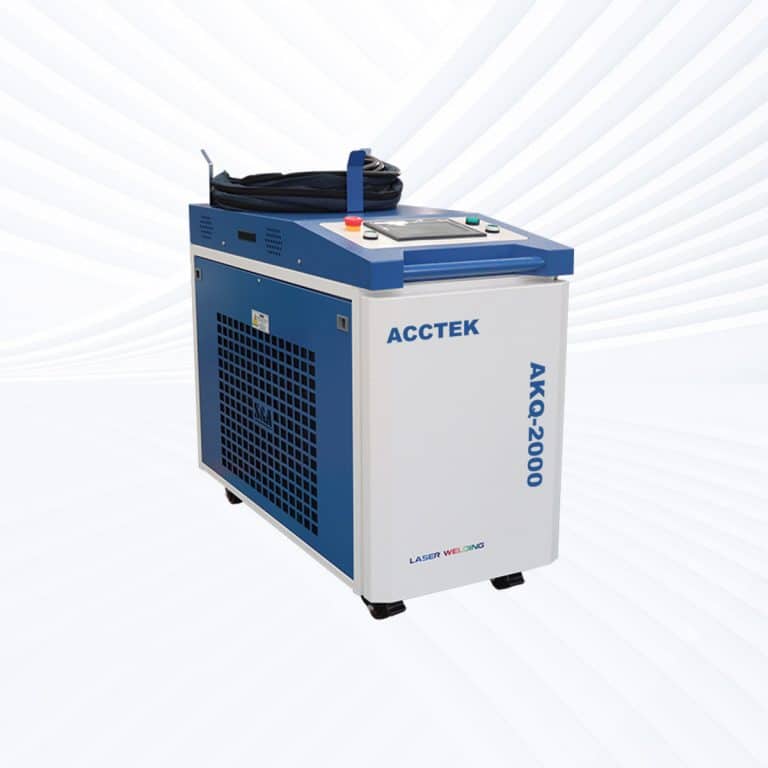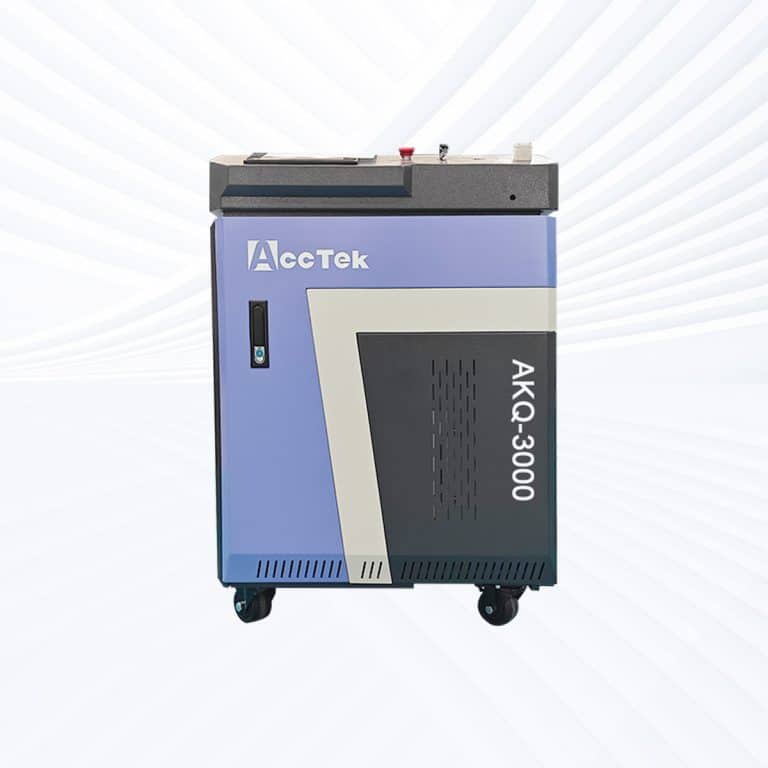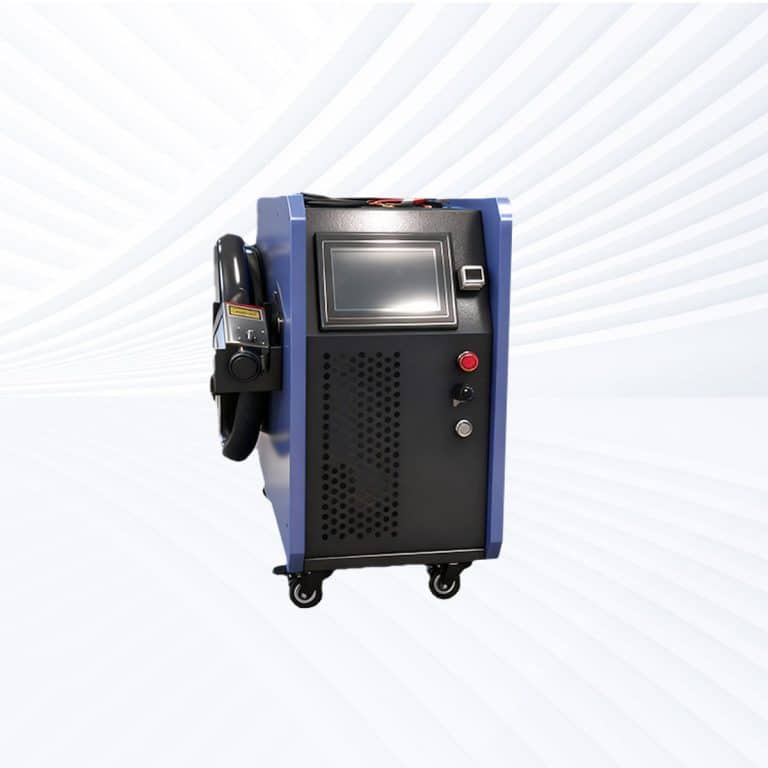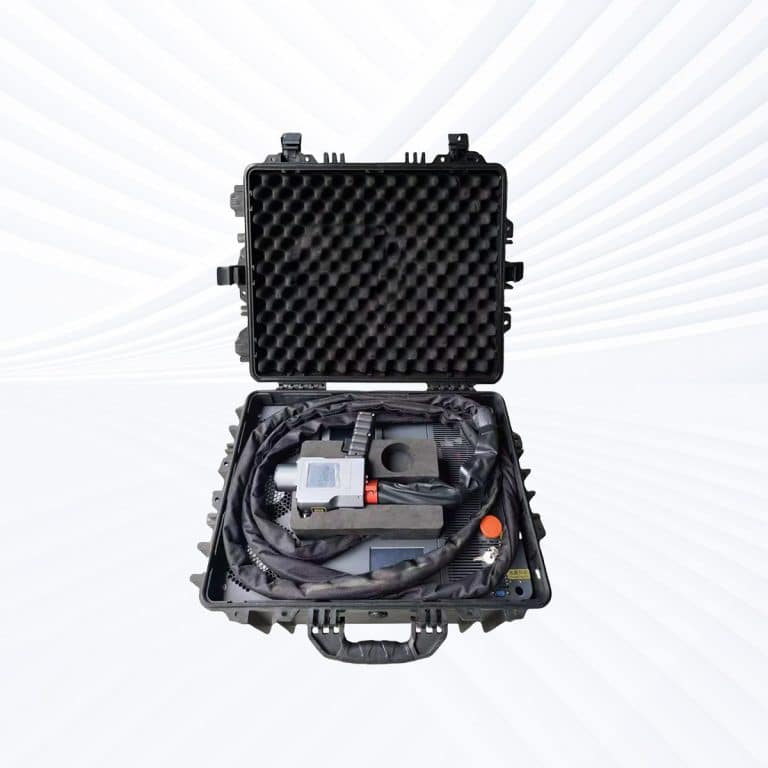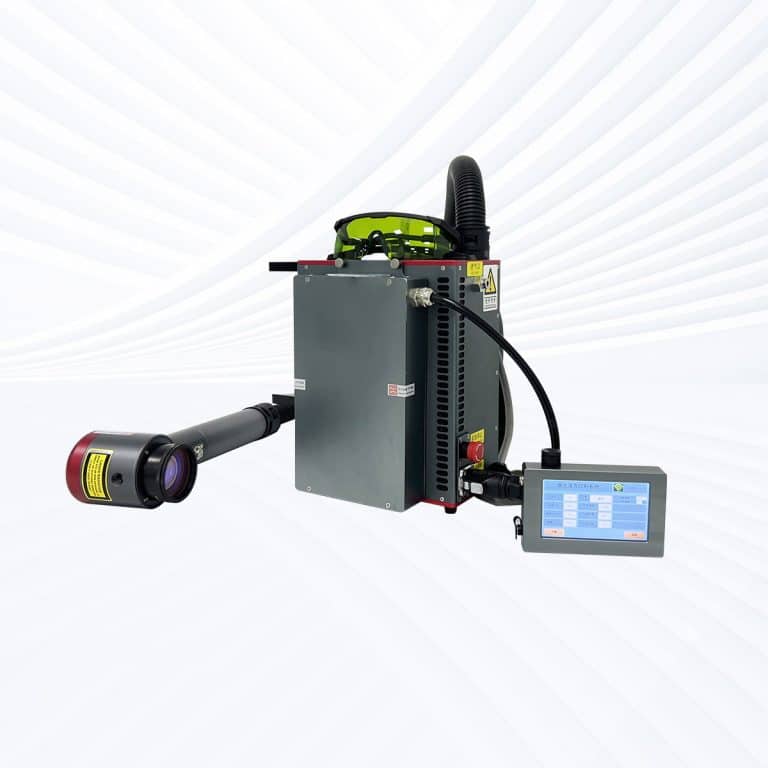Product Introduction
Types of Metal Laser Cleaning Machines
Benefits of Laser Cleaning Metal
Non-Contact and Surface-Friendly
Laser cleaning is a non-abrasive, non-contact process that removes rust, paint, and contaminants without damaging the base metal. This ensures the surface remains intact, maintaining its structural and dimensional accuracy during and after cleaning.
Eco-Friendly and Safe
The process does not require harmful chemicals, abrasive materials, or secondary waste handling. It significantly reduces environmental pollution and health hazards, making it a safer and greener alternative for operators and industrial cleaning applications.
Precise and Selective Cleaning
Laser cleaning offers exceptional control, allowing users to clean specific areas without affecting adjacent surfaces. This is particularly beneficial for intricate components or high-precision industries where surface protection is critical.
Low Operating and Maintenance Costs
With fewer consumables, minimal maintenance, and no need for chemicals or blast media, laser cleaning offers a cost-effective long-term solution. It reduces overall operating costs and increases equipment uptime for industrial users.
Fast and Efficient Process
Laser systems provide rapid, consistent cleaning results with adjustable parameters. They are ideal for removing surface contaminants in preparation for welding, coating, or painting, enhancing productivity and reducing labor-intensive procedures.
Easy Automation and Integration
Laser cleaning machines can be integrated into automated production lines or robotic systems. This improves cleaning consistency, reduces manual labor, and supports high-volume industrial applications with greater precision and efficiency.
Compatible Metal Materials
- Carbon Steel
- Stainless Steel
- Aluminum
- Copper
- Brass
- Bronze
- Cast Iron
- Galvanized Steel
- Nickel
- Nickel Alloys
- Titanium
- Titanium Alloys
- Tool Steel
- Mild Steel
- Spring Steel
- High-Speed Steel
- Low-Alloy Steel
- Zinc
- Tin
- Lead
- Magnesium
- Magnesium Alloys
- Cobalt
- Cobalt-Chrome Alloys
- Manganese Steel
- Monel
- Hastelloy
- Tantalum
- Tungsten
- Molybdenum
- Beryllium
- Chromium
- White Metal
- Pewter
- Duralumin
- Alnico
- Nitinol
- Permalloy
- Invar
- Stainless Clad Metals
Application of Metal Laser Cleaning Machines


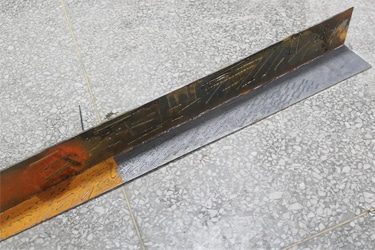


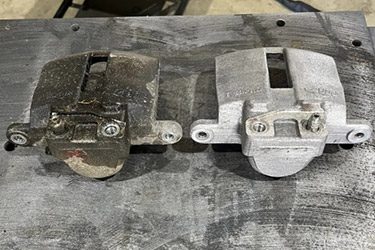
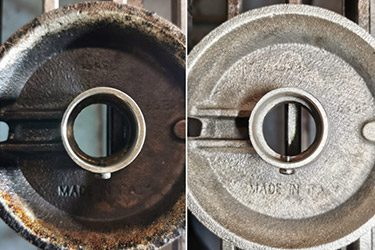
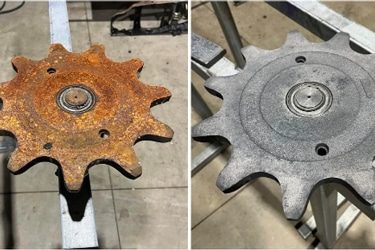
Customer Testimonials
Comparison VS Other Cleaning Technologies
| Comparison Item | Laser Cleaning | Sandblasting | Chemical Cleaning | Ultrasonic Cleaning |
|---|---|---|---|---|
| Cleaning Method | Non-contact, laser ablation | Abrasive impact | Chemical reaction | Cavitation from high-frequency waves |
| Material Damage Risk | Minimal to none | High, especially on delicate surfaces | Possible corrosion | Low |
| Environmental Impact | Eco-friendly, no secondary waste | Dust and waste generation | Hazardous chemical waste | Requires disposal of cleaning fluids |
| Precision | Very high, controllable | Low to moderate | Moderate | High on small parts |
| Surface Preparation | Excellent for welding/coating | Rough surface texture | May require neutralization | Suitable for precision parts |
| Waste Disposal | Minimal | Requires cleanup | Hazardous waste | Contaminated fluid disposal |
| Operating Cost | Low long-term | High media replacement cost | High chemical costs | Moderate |
| Maintenance Needs | Low | Medium to high | Medium | Medium |
| Automation Compatibility | Easy integration with robotics | Difficult | Moderate | Moderate |
| Surface Residue Removal | Excellent | Good | Good | Excellent for small contaminants |
| Safety Requirements | Requires laser safety protocols | Requires PPE and dust control | Requires PPE and ventilation | Requires safe handling of fluids |
| Cleaning Speed | Fast (depending on power) | Moderate to fast | Slow to moderate | Slow |
| Operating Noise | Low to moderate | Very loud | Low | Low |
| Consumables | None or minimal | High (abrasive media) | High (chemicals) | Medium (cleaning agents) |
| Suitable for Complex Shapes | Excellent, flexible laser heads | Poor coverage in tight spaces | Limited by soaking ability | Excellent for intricate parts |
Why Choose Us
Efficient Cleaning
Our machines offer fast, precise cleaning without chemicals or abrasion, making them ideal for delicate surfaces and complex materials across various industries.
Safe & Eco-Friendly
Laser cleaning eliminates the need for harsh chemicals and generates no secondary pollution, creating a safer and more environmentally friendly workspace.
Stable Performance
Built with high-quality components and advanced control systems, our machines ensure consistent cleaning results with minimal maintenance and long service life.
Custom Solutions
We provide flexible configurations and tailored options to match different cleaning requirements, helping customers achieve optimal performance for their specific applications.
Related Resources
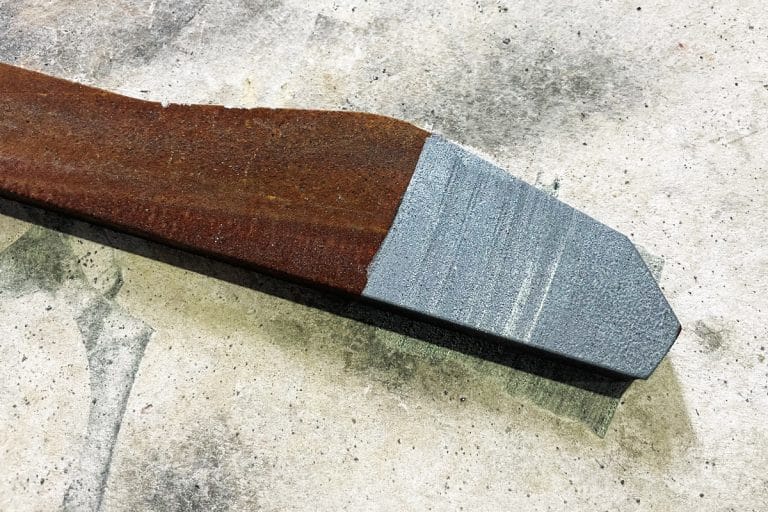
What Are the Common Problems With Laser Cleaning Machines
This article addresses the most common problems with laser cleaning machines, including performance issues, maintenance challenges, and practical solutions for reliable operation.
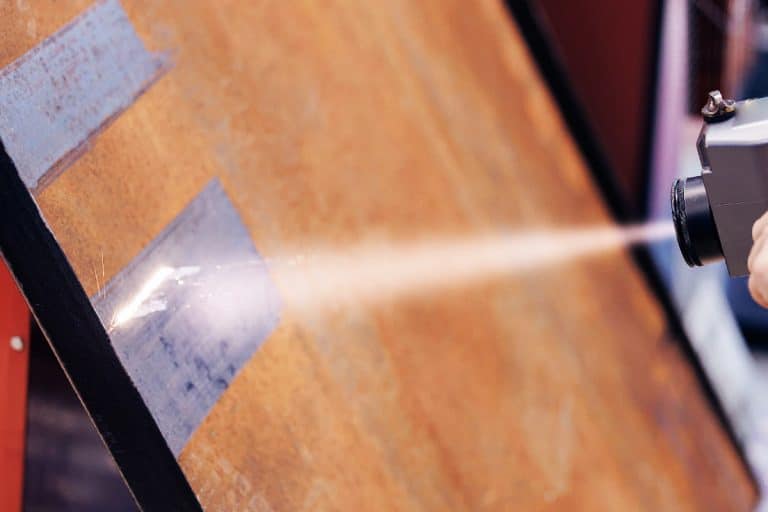
What Precautions Should Be Taken During Laser Cleaning
This article explains key precautions for safe laser cleaning, covering equipment setup, operator protection, ventilation, maintenance, and compliance with safety standards.
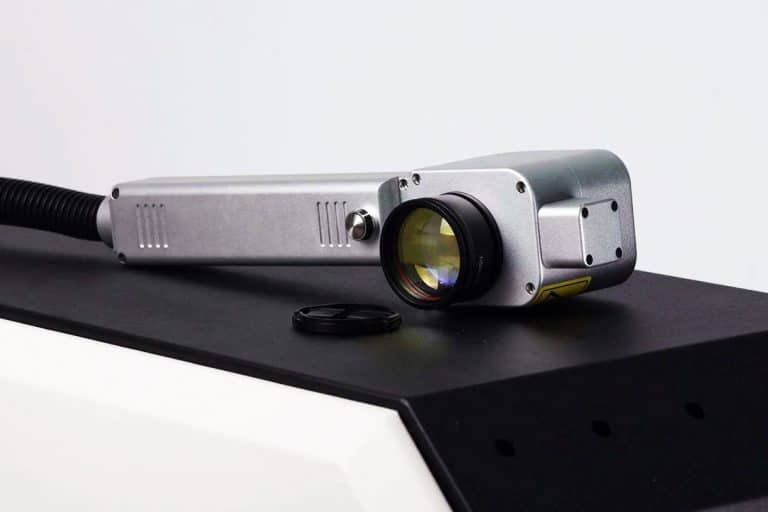
What Factors Affect Laser Cleaning Performance
This article explains the key factors that influence laser cleaning performance, including laser parameters, material properties, process control, and environmental conditions.
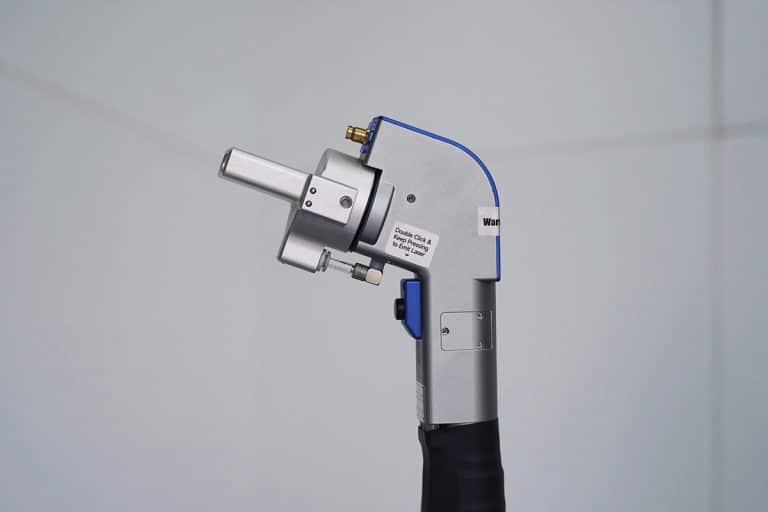
How Effective Is Laser Cleaning
This article explores how laser cleaning works, factors that influence its performance, applications, limitations, and how it compares with traditional cleaning methods.
Frequently Asked Questions
What Laser Power Options Are Available For Metal Laser Cleaning Machines?
- Continuous Laser Cleaning Machines: These machines deliver a constant stream of laser energy, making them ideal for large-scale industrial cleaning tasks that require high efficiency and deep cleaning power. Suitable for removing thick rust, oxide layers, paint, and welding slag on large metal surfaces, they are commonly used in shipbuilding, construction, and heavy machinery maintenance. Available power options include:
- 1000W: Best for light rust removal or small parts where precision isn’t critical.
- 1500W & 2000W: These mid-range options offer a balance between speed and precision. Suitable for medium rust layers, paint, or scale removal.
- 3000W: Delivers higher energy for tougher cleaning jobs, including thick oxide layers and stubborn coatings on larger metal structures.
- 6000W: Designed for the most demanding tasks, such as deep descaling, paint stripping, and industrial-scale surface preparation. High power enables fast throughput, but requires proper safety controls and trained operation.
- Pulse Laser Cleaning Machines: Pulse lasers emit energy in short, high-peak-power bursts, offering precision and minimal heat input. This makes them ideal for applications that require fine control, like delicate surfaces, precision tools, or electronics components. They are widely used in aerospace, restoration, medical tools cleaning, and the semiconductor industries. Available power options include:
- 100W & 200W: Ideal for fine detail work such as removing thin oxide films, micro-contaminants, or coatings from sensitive substrates without damaging the base material.
- 300W & 500W: Provide a bit more power for moderate cleaning tasks, such as removing paint, grease, or light rust from precision components.
- 1000W: A versatile option capable of handling more aggressive cleaning while still maintaining control over heat and substrate safety.
- 2000W: Offers high peak power with the benefits of pulse control—well-suited for complex industrial needs where both precision and deeper cleaning are required.
What Is The Price of Metal Laser Cleaning Machines?
- Continuous Laser Cleaning Machines: These systems use a steady laser beam to remove surface contaminants like rust, oil, paint, and oxide from metal components. With a price range of $3,500 to $7,500, they offer a budget-friendly solution for general-purpose industrial cleaning. Continuous machines are most effective on larger metal surfaces where high speed is more important than pinpoint accuracy. However, due to their constant energy output, they can generate more heat, which may not be ideal for delicate or heat-sensitive materials.
- Pulse Laser Cleaning Machines: Designed for precision and control, pulse laser systems fire short, high-energy bursts that clean without overheating or damaging the base material. These machines range in price from $6,000 to $70,000, reflecting the broad variety in power levels, system complexity, and intended usage. Lower-end pulse machines are suitable for tasks like rust removal on small parts or light-duty mold cleaning. At the higher end, these machines are equipped for specialized industries such as aerospace, electronics, and conservation, where surface integrity is critical and cleaning requirements are more demanding.
How Does Laser Power Affect The Speed of Cleaning Metal?
- Continuous Laser Cleaning Machines: Continuous-wave (CW) lasers provide a steady, uninterrupted energy stream, making them ideal for large-scale and high-speed cleaning tasks. As power increases, so does the cleaning speed, because more energy is delivered to the surface in less time.
- 1000W: Suitable for smaller jobs and thin rust layers. Cleaning speed is moderate but consistent.
- 1500W–2000W: Boosts cleaning efficiency on medium contamination levels. Good for industrial parts, pipelines, or metal molds.
- 3000W: Enables significantly faster surface treatment. Removes thick paint, heavy corrosion, or scale quickly.
- 6000W: Delivers extremely high throughput. Ideal for large-area cleaning or deep oxide removal at production-level speeds. At this level, the cleaning rate is maximized, but safety and heat control become more critical.
- Pulse Laser Cleaning Machines: Pulse lasers emit energy in bursts, providing precise control over the cleaning process. The power rating in pulse machines corresponds not only to average energy delivery but also to peak pulse energy, which affects how aggressively the surface is treated.
- 100W–200W: Offers slow, highly controlled cleaning. Ideal for delicate tasks like art restoration or microelectronics, where surface damage must be avoided.
- 300W–500W: Speeds up cleaning while maintaining precision. Commonly used in aerospace, automotive, and mold cleaning.
- 1000W–2000W: High-power pulse systems can approach the speed of lower-power continuous lasers, especially when removing thicker contaminants. They combine fast cleaning with precision, making them versatile for complex or heat-sensitive materials.
How To Select Metal Laser Cleaning Machines?
- Continuous Laser Cleaning Machines: These systems emit a steady beam of laser energy, making them ideal for high-speed and large-area cleaning. Available in power options like 1000W, 1500W, 2000W, 3000W, and 6000W, continuous lasers are best suited for thick rust, heavy paint layers, and industrial-scale cleaning.
- 1000W–1500W: Good for general-purpose cleaning tasks with moderate speed and coverage.
- 2000W–3000W: Offers faster cleaning for tougher contaminants and mid-to-large surface areas.
- 6000W: Designed for high-volume, high-throughput industrial environments where cleaning speed is critical.
- Pulse Laser Cleaning Machines: These machines emit energy in controlled bursts, allowing for precise cleaning with minimal heat impact. They are offered in power levels like 100W, 200W, 300W, 500W, 1000W, and 2000W. Pulse lasers are preferred for sensitive surfaces, fine detail work, and precision components.
- 100W–300W: Ideal for delicate metals, electronics, or cultural heritage restoration.
- 500W–1000W: Balances precision and cleaning speed, suitable for paint removal or oxide cleaning on moderate surfaces.
- 2000W: Provides high peak power with minimal surface damage, useful for demanding precision applications.
- Material Type and Surface Condition: The type of metal and the contamination level greatly affect machine choice.
- Steel and Iron: Continuous lasers (1500W and up) clean rust and scale effectively.
- Aluminum, Brass, Copper: Pulse lasers prevent damage to heat-sensitive or reflective surfaces.
- Coated Surfaces: Mid- to high-power systems (1000W or higher) remove layers efficiently without damaging the base material.
- Cleaning Application and Environment: The machine should match the task and workspace setup.
- Industrial Production Lines: High-power continuous systems with automation or robotics.
- On-site Maintenance: Portable handheld units for flexible operation.
- Precision Workshops: Pulse systems for safe and targeted cleaning of small components.
- Cooling System: Laser machines above 1000W generally require water cooling for safe and consistent operation. Air-cooled systems are available in lower power models and are easier to maintain, but may not handle long-duration tasks.
Does Laser Effectively Clean Reflective Metal?
- Aluminum and Aluminum Alloys: Aluminum has a high reflectivity, especially in its polished form, which can initially reduce laser absorption. However, fiber lasers and certain pulse lasers can overcome this reflectivity with high peak power and short pulses, making them effective for removing oxidation, anodized layers, or coatings. Once the oxide layer or contamination is partially removed, the surface absorbs more energy, improving cleaning efficiency.
- Copper and Brass: These metals are extremely reflective and highly conductive, making them harder to clean with low-powered lasers. Specialized high-power fiber lasers or lasers with short wavelengths (like green or UV lasers) are better suited for these surfaces. While effective cleaning is possible, settings must be carefully controlled to avoid surface etching or incomplete removal.
- Stainless Steel: Stainless steel is moderately reflective, but laser cleaning is very effective for removing rust, paint, and surface contaminants. The metal responds well to nanosecond and picosecond pulse fiber lasers, with minimal risk of damaging the base material. Cleaning efficiency remains high, even on polished or brushed finishes.
- Titanium and Nickel Alloys: These high-performance reflective metals can be cleaned effectively with advanced pulse fiber lasers. Oxide layers, grease, and corrosion can be removed without altering the metal surface. Because of their engineering applications, laser cleaning is often preferred to avoid chemical or abrasive damage.
- Precautions and Laser Type Considerations: Reflective metals can bounce back laser energy, which poses a risk to laser optics and safety. This is why only fiber lasers or lasers specifically designed for cleaning metal surfaces should be used. CO2 lasers are generally not suitable due to their wavelength being poorly absorbed by reflective metals.
Does Laser Cleaning Metal Produce Fumes?
- Rust and Oxides: When cleaning corrosion or scale from steel, iron, or aluminum, the laser ablates the oxidized layer, producing metal oxide dust and vapor. While these fumes are typically less harmful than chemical alternatives, they can still irritate the respiratory system and require proper extraction.
- Paint and Coatings: Removing paint with a laser releases a complex mix of gases and fine particles, depending on the paint type. Some paints—especially those with lead, cadmium, or halogenated compounds—can produce hazardous fumes. Fume extraction and filtration are essential when working on coated surfaces.
- Grease, Oil, and Adhesives: Organic residues like grease, oil, or glue burn or vaporize under laser exposure. This creates smoke and airborne contaminants that may contain volatile organic compounds (VOCs). Ventilation or localized fume hoods are necessary to protect the operator and the surrounding equipment.
- Plastic or Polymer Layers on Metal: In cases where plastic coatings are removed from metal surfaces, toxic fumes—similar to those seen in laser cutting of plastics—may occur. Materials like PVC or fluoropolymers should be identified and handled with caution.
- Fume Management and Safety: Laser cleaning systems should be paired with fume extraction units equipped with HEPA and activated carbon filters. These systems capture airborne particulates and neutralize hazardous compounds before they enter the work environment. Operators should also use personal protective equipment (PPE) like respirators in enclosed or poorly ventilated spaces.
Does Laser Cleaning Damage Metal Surfaces?
- Steel and Iron: Carbon steel, stainless steel, and cast iron can be cleaned with both pulse and continuous lasers without surface damage when proper settings are used. Pulse lasers in the 100W to 1000W range are commonly applied for fine surface preparation. Overpowering or moving the beam too slowly can cause discoloration or mild pitting, especially on polished finishes.
- Aluminum and Copper: These metals are softer and more reflective. Pulse lasers are preferred, typically in the 100W to 500W range, to avoid warping or surface texturing. Laser parameters must be fine-tuned to prevent heat buildup, especially on thin or high-precision parts.
- Plated or Coated Surfaces: When removing paint, oxides, or other coatings, laser energy should be matched to the thickness and composition of the layer. Done correctly, the underlying metal remains intact. Improper setup can result in micro-scarring or thermal tinting on sensitive finishes.
- Welds and Joints: Laser cleaning is often used to remove oxides and residues from welded areas without affecting the joint integrity. This is especially common in aerospace and automotive applications. The laser beam can be adjusted to clean without altering surface hardness or structure.
- Precision Components and Tools: With pulse lasers, even highly sensitive parts like molds, turbine blades, and micro-machined components can be cleaned effectively. The energy is confined to surface contaminants, preserving the dimensional accuracy and finish of the base material.
What Is The Power Consumption of Metal Laser Cleaning Machines?
- Continuous Laser Cleaning Machines: These machines run at a constant power output and are designed for high-speed cleaning over large areas. They typically require more energy due to continuous beam operation and higher cooling demands.
- 1000W: Consumes around 5 kW of electrical power. Suitable for light-to-moderate surface cleaning tasks.
- 1500W: Requires approximately 6.5 kW. Offers faster cleaning speed and can handle thicker paint and rust layers.
- 2000W: Uses about 8.5 kW. Commonly used in industrial workshops for heavy-duty cleaning.
- 3000W: Consumes roughly 12 kW. Designed for fast throughput on large-scale surfaces.
- 6000W: Requires up to 20 kW. Suited for large industrial applications with high contamination levels and volume.
- Pulse Laser Cleaning Machines: These systems emit energy in short bursts, consuming less power overall while providing fine control. They are more energy-efficient, especially when working on precision parts or heat-sensitive materials.
- 100W: Uses around 0.5 kW. Best for gentle cleaning, like artifact restoration or fine component prep.
- 200W: Requires 1 kW. Used in electronics, mold maintenance, or light oxide removal.
- 300W: Consumes 1.5 kW. Provides faster cleaning while maintaining control over surface safety.
- 500W: Uses about 2.5 kW. Balances energy use and cleaning power for moderate-duty tasks.
- 1000W: Requires 5 kW. High-efficiency option for industrial users needing precision and speed.
- 2000W: Draws approximately 8.5 kW. Delivers top-tier pulse performance, approaching continuous laser capabilities with lower thermal risk.

